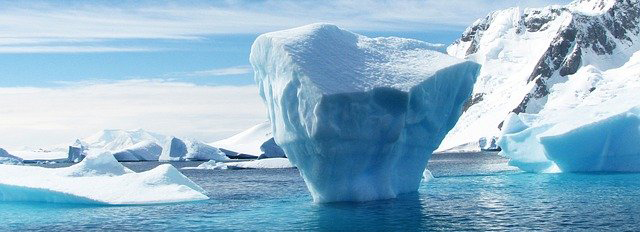Arctic
Contents |
[edit] Introduction
The Arctic refers to the northernmost part of the world (or Circumpolar North), normally defined as the area that is within the Arctic Circle, a latitude line that runs about 66.5° north of the Equator. The Subarctic is just below this line, it historically has also maintained permafrost but where the upper most layer changes seasonally, with grasses, shrubs, mosses, lichen, and some trees growing.
The polar opposite of the Arctic is the Antarctic which is the southern most surface of the globe, defined similarly by a latitudinal line running 66°30′ South.
[edit] Origins
The word Arctic originates from the Greek word for bear (arktos), related to the constellation of stars known as the great bear and little bear which point to the north star (the ursa major and ursa minor constellations). These can be seen in the northern hemisphere, similar to the location of the Arctic on the northern surface of the globe.
[edit] Geography
The arctic circle includes the Arctic Ocean, including the deep Arctic Basin (also referred to as the North Polar Basin) as well as the northern most parts of Finland, Norway, Sweden, Russia, Canada, Greenland, and the U.S. state of Alaska, some parts of which might be defined as subarctic.
[edit] Temperature
Both the Arctic to the North and the Antarctic to the South are cold because they don't receive much direct sunlight, the sun always stays low on the horizon, and in winter, below the horizon. The Arctic Tundra Biome is one of the coldest of all global biomes, with an average annual temperature in the Arctic Circle between -12 and 6 degrees C. However different sources have reported an average temperature increase in the region over the last 30 years with some 10-20% reduction in ice cover.
The EU project Copernicus has reported that the Arctic region has been warming at a rate well above that of the planet as a whole since the 1990s, due to a phenomenon known as Arctic amplification.
[edit] Arctic amplification
Arctic amplification describes a phenomenon by which localised temperature rises in the arctic region can be two or three times that of the rest of the globe. The specific causes of this are debated but there is a general acceptance that there is a relationship to the albedo effect where a perfect light coloured reflector would have an albedo of 1, and a dark absorber would have an albedo of 0. As thick areas of ice decline, the thinner ice left is more vulnerable to further melting and in areas where reflective ice is replaced by dark oceans more energy can be absorbed from the Sun, thus causing additional heating and localised warming. This Arctic amplification is further driving the melting of ice sheets, which will impact sea levels, as well as the potential for permafrost melt, which releases large amounts of methane gas.
[edit] Related articles on Building Design
- Adaptation
- Albedo in the built environment
- Bioparks.
- Biodome.
- Climate change science.
- Climate change 2021: the physical science basis IPCC report
- Design Summer Year (DSY).
- Designated land.
- Designated areas.
- Geoparks.
- Sustainability in building design and construction
- Sites of Special Scientific Interest.
- Tundra.
- Types of land.
- World heritage site.
Featured articles and news
A change to adoptive architecture
Effects of global weather warming on architectural detailing, material choice and human interaction.
How big is the problem and what can we do to mitigate the effects?
Overheating guidance and tools for building designers
A number of cool guides to help with the heat.
The UK's Modern Industrial Strategy: A 10 year plan
Previous consultation criticism, current key elements and general support with some persisting reservations.
Building Safety Regulator reforms
New roles, new staff and a new fast track service pave the way for a single construction regulator.
Architectural Technologist CPDs and Communications
CIAT CPD… and how you can do it!
Cooling centres and cool spaces
Managing extreme heat in cities by directing the public to places for heat stress relief and water sources.
Winter gardens: A brief history and warm variations
Extending the season with glass in different forms and terms.
Restoring Great Yarmouth's Winter Gardens
Transforming one of the least sustainable constructions imaginable.
Construction Skills Mission Board launch sector drive
Newly formed government and industry collaboration set strategy for recruiting an additional 100,000 construction workers a year.
New Architects Code comes into effect in September 2025
ARB Architects Code of Conduct and Practice available with ongoing consultation regarding guidance.
Welsh Skills Body (Medr) launches ambitious plan
The new skills body brings together funding and regulation of tertiary education and research for the devolved nation.
Paul Gandy FCIOB announced as next CIOB President
Former Tilbury Douglas CEO takes helm.
UK Infrastructure: A 10 Year Strategy. In brief with reactions
With the National Infrastructure and Service Transformation Authority (NISTA).
Ebenezer Howard: inventor of the garden city. Book review.
Airtightness Topic Guide BSRIA TG 27/2025
Explaining the basics of airtightness, what it is, why it's important, when it's required and how it's carried out.






















